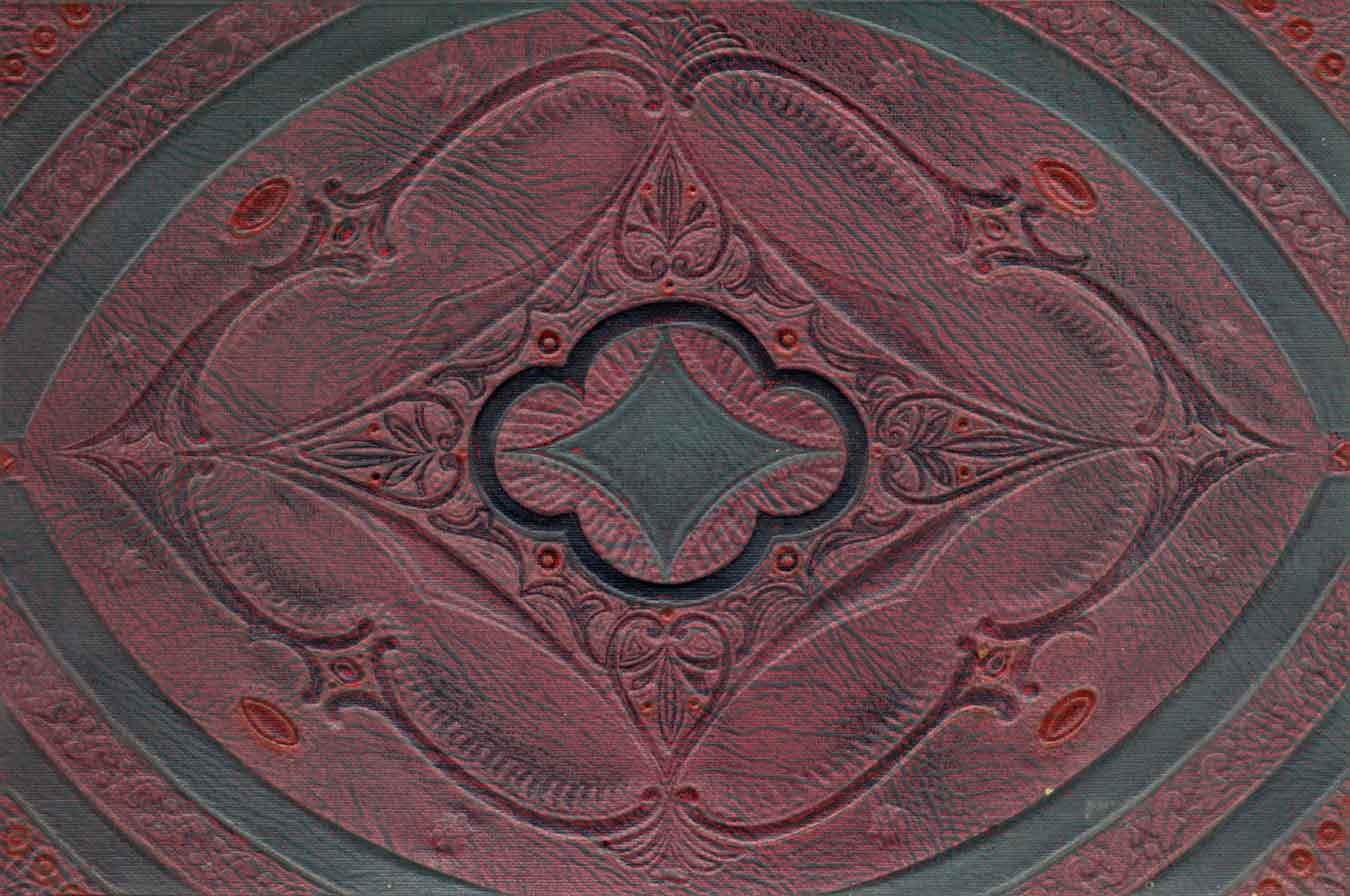Theater
During her time in Boston, Bettie spent much of her free time at the theaters or at symphony concerts. No doubt this was due to her active social and dating life, but many of the theaters she attended were considered grand and spectacular places of performance at the time. Unfortunately, with the rise in popularity of movies and television, most of these theaters were either turned into movie houses or demolished completely. Boston's theater district now flourishes with several well-attended theaters, but it’s a shell of its glory days during Bettie's time.
Boston Opera House
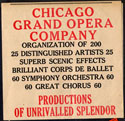
The schedule of operas performed in the Fall of 1933 at the Boston Opera House by the Chicago Grand Opera Company.
Source: Jean Elizabeth Goodrich Scrapbook
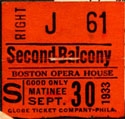
A ticket for a performance of Madama Butterfly by the Chicago Grand Opera Company.
Source: Jean Elizabeth Goodrich Scrapbook
Perhaps the most notable of the theaters she attended was the Boston Opera House. It was built in 1909 on Huntington Avenue, between the Museum of Fine Arts and Symphony Hall. Its first resident was the Boston Opera Company, alongside many touring Broadway musicals and opera companies – such as the Chicago Grand Opera that Bettie saw. When the Boston Opera House opened, it was said to be "the best equipped temple of music in America" by the Boston Globe. Soon after Bettie’s time at Simmons, the Boston Opera House fell into disrepair and was finally demolished in 1958 to make room for a Northeastern dorm. The Opera House as we know it today is located on Washington Street, and was originally a vaudeville and movie theater. It was restored in 1991 to look like the original Boston Opera House, and is now home to the Boston Ballet.
Hollis Street Theatre
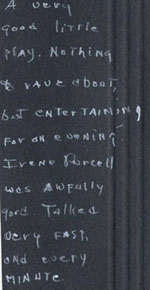
Bettie’s opinion of a Hollis Street Theatre production- Biography:A Comedy, starring Irene Purcell.
Source: Jean Elizabeth Goodrich Scrapbook
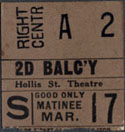
A ticket stub for the play Autumn Crocus at the Hollis Street Theatre.
Source: Jean Elizabeth Goodrich Scrapbook
Both the Hollis Street Theatre and the Colonial Theatre were considered among Boston’s most fashionable theaters at the time. The Hollis Street Theatre was built in 1885, with 1,684 seats, and opened with a production of Gilbert and Sullivan's The Mikado. In the early 20th century, when most of the theaters were being turned into movie houses, Hollis Street survived as a venue for live events, because it was the only theater that didn't have a projection room. However, similar to many of the other theaters built at the turn of the century, the Hollis Street Theatre saw hard times during the Depression, and was demolished in 1935. Perhaps reflective of the diminishing popularity of local theater, the roof collapsed during its demolition, killing several workers.
Colonial Theatre
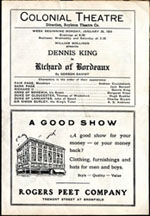
A program for a theatrical production of the play Richard of Bordeaux at the Colonial Theatre.
Source: Jean Elizabeth Goodrich Scrapbook
The Colonial Theatre was designed in the grand tradition of extravagant theaters by Clarence Blackall, and opened on December 20, 1900 with a production of Ben Hur. Many well known productions had their out of town tryouts at the Colonial, including Flo Zeigfeld and his Follies. Perhaps the most notable feature of the Colonial Theatre is the interior design. Artist Herman Schladermunt was commissioned to paint the mural on the dome, which features three figures, representing Tradition, Truth and Inspiration. The four seated female figures in the mural represent Epic Poetry, History, Tragedy, and Comic or Pastoral verse. The Colonial has stood the test of time, and is one of the few turn of the century theaters that is still standing and thriving.
